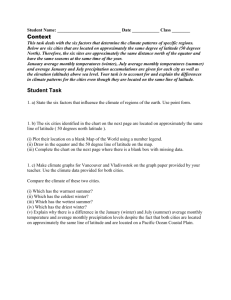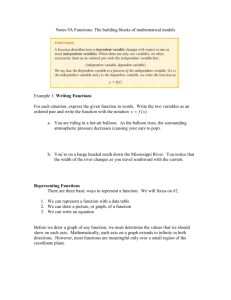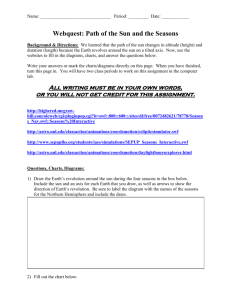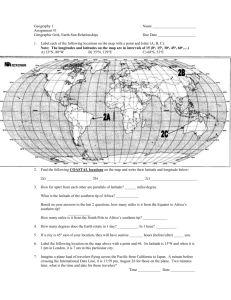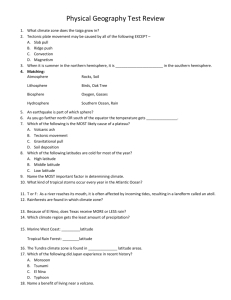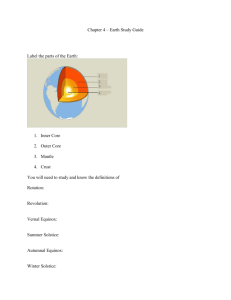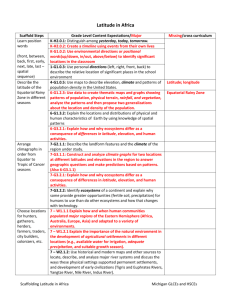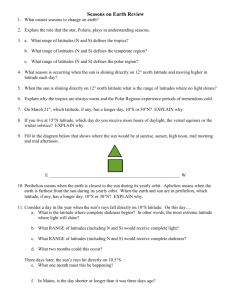Physical Science: Variations in Daylight with latitude
advertisement
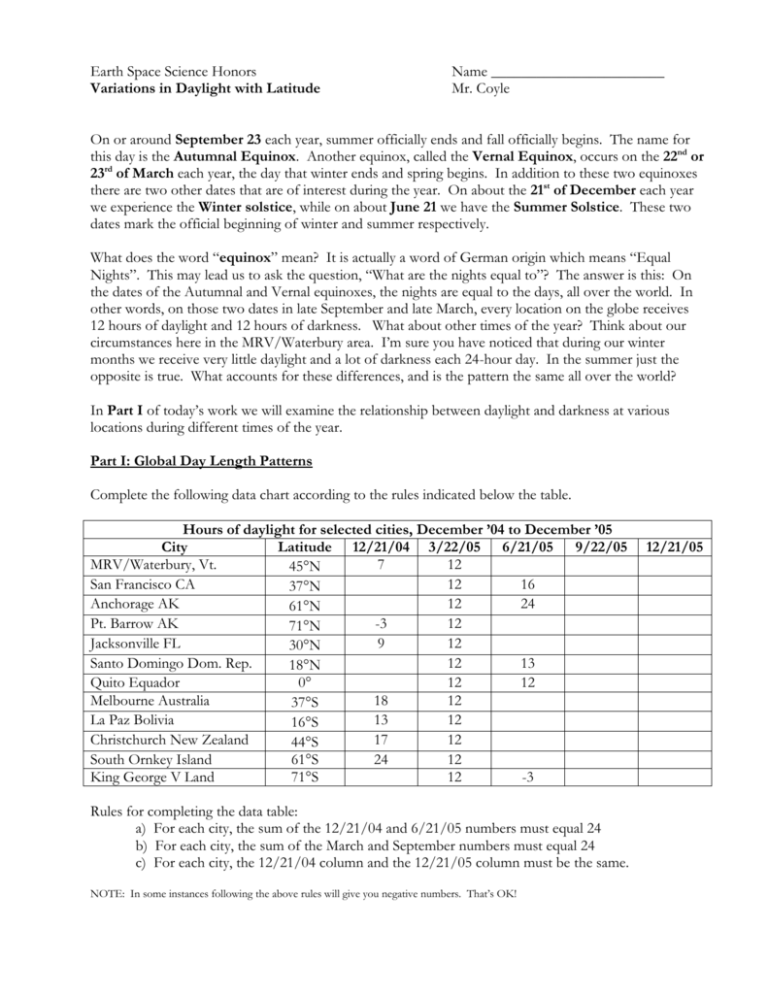
Earth Space Science Honors Variations in Daylight with Latitude Name _______________________ Mr. Coyle On or around September 23 each year, summer officially ends and fall officially begins. The name for this day is the Autumnal Equinox. Another equinox, called the Vernal Equinox, occurs on the 22nd or 23rd of March each year, the day that winter ends and spring begins. In addition to these two equinoxes there are two other dates that are of interest during the year. On about the 21st of December each year we experience the Winter solstice, while on about June 21 we have the Summer Solstice. These two dates mark the official beginning of winter and summer respectively. What does the word “equinox” mean? It is actually a word of German origin which means “Equal Nights”. This may lead us to ask the question, “What are the nights equal to”? The answer is this: On the dates of the Autumnal and Vernal equinoxes, the nights are equal to the days, all over the world. In other words, on those two dates in late September and late March, every location on the globe receives 12 hours of daylight and 12 hours of darkness. What about other times of the year? Think about our circumstances here in the MRV/Waterbury area. I’m sure you have noticed that during our winter months we receive very little daylight and a lot of darkness each 24-hour day. In the summer just the opposite is true. What accounts for these differences, and is the pattern the same all over the world? In Part I of today’s work we will examine the relationship between daylight and darkness at various locations during different times of the year. Part I: Global Day Length Patterns Complete the following data chart according to the rules indicated below the table. Hours of daylight for selected cities, December ’04 to December ’05 City Latitude 12/21/04 3/22/05 6/21/05 9/22/05 MRV/Waterbury, Vt. 7 12 45N San Francisco CA 12 16 37N Anchorage AK 12 24 61N Pt. Barrow AK -3 12 71N Jacksonville FL 9 12 30N Santo Domingo Dom. Rep. 12 13 18N Quito Equador 0° 12 12 Melbourne Australia 18 12 37S La Paz Bolivia 13 12 16S Christchurch New Zealand 17 12 44S South Ornkey Island 61°S 24 12 King George V Land 71°S 12 -3 Rules for completing the data table: a) For each city, the sum of the 12/21/04 and 6/21/05 numbers must equal 24 b) For each city, the sum of the March and September numbers must equal 24 c) For each city, the 12/21/04 column and the 12/21/05 column must be the same. NOTE: In some instances following the above rules will give you negative numbers. That’s OK! 12/21/05 Graph: After filling in the data table: Construct a graph with Hours of Daylight on the vertical (y) axis and Dates on the horizontal (x) axis. Plot a line for each city, using a different color for each. Answer the following questions based on the patterns shown on the graph. 1. Think about the pattern of daylight and darkness we experience here in the MRV/Waterbury area over the course of a year. How does the line for Waterbury on the graph reflect this familiar pattern? 2. Compare the lines on your graph for the locations in the Northern Hemisphere. Based on the shapes of the lines on your graph, explain the following relationships: a) The relationship between degrees of latitude and summer (June) day length. b) The relationship between degrees of latitude and winter (December) day length. c) The relationship between degrees of latitude and the difference between summer and winter day length. d) The relationship between degrees of latitude and spring/fall (March/September) day length. 3. Compare the lines on your graph for the locations in the Southern Hemisphere. Based on the shapes of the lines on your graph, explain the following relationships: a) The relationship between degrees of latitude and summer day length. b) The relationship between degrees of latitude and winter day length. c) The relationship between degrees of latitude and the difference between summer and winter day length. d) The relationship between degrees of latitude and spring/fall (March/September) day length. 4. Pick two locations from the chart that are similar in latitude but in opposite hemispheres. Name the two locations you chose, and describe how the lines for these two locations on the graph are similar and how they are different. On a globe are two significant lines of latitude known as the Arctic Circle and the Antarctic Circle. The Arctic Circle is located at 66.5°N latitude, while the Antarctic Circle is at 66.5°S latitude. During each hemisphere’s winter solstice (December 21 in the North and June 21 in the South) locations at exactly 66.5° will experience darkness the entire 24-hour day. Locations at latitudes higher than 66.5° will experience darkness for several days before and after the winter solstice as well, with the time period being longer the higher the latitude. Similarly, during each hemisphere’s summer solstice (June 21 in the North and December 21 in the South) locations at exactly 66.5° will experience daylight the entire 24-hour day. Locations at latitudes higher than 66.5° will experience daylight for several days before and after the summer solstice as well, with the time period being longer the higher the latitude. 5. Using the information provided in the previous paragraph, comment on what you think is meant by the number -3 and 27 for hours of daylight in Point Barrow, Alaska and King George V Land, Antarctica. 6. How extreme the seasons are in any particular location is determined by the difference between the hours of daylight in the summer compared to the hours of daylight in the winter. a) Which place or places on the chart would you expect to have the most extreme seasons, and why? b) At what location on the chart would you expect the climate to be the most consistent all year, and why? c) Of the locations listed on the chart, which Southern Hemisphere location would you expect would have seasons similar to ours here in MRV/Waterbury, and why? d) Many retired people who live in the MRV/Waterbury area in the summer will spend their winters in Florida. Based in the information in the chart about Fort Lauderdale, Florida, why would people choose to spend their winters there rather than here?
